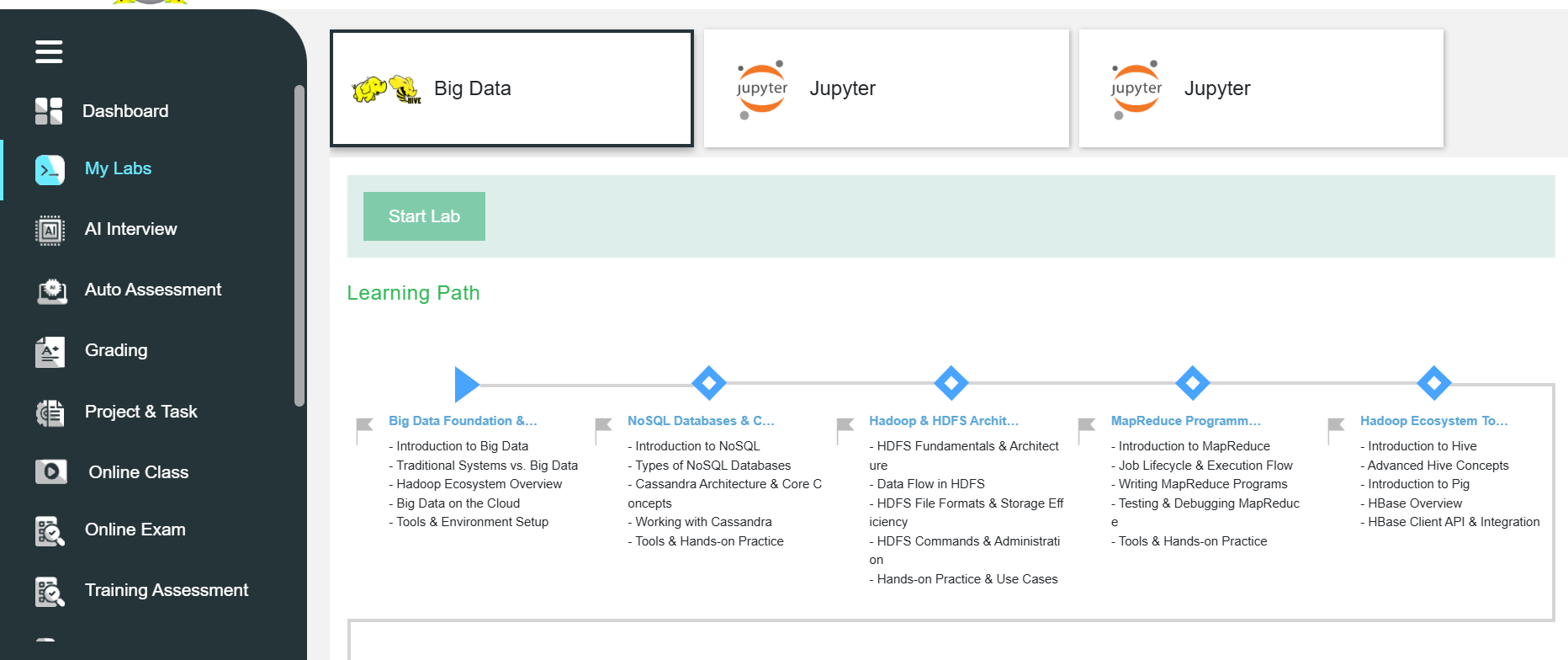What is Sandbox Environment?
A sandbox environment refers to a virtual, isolated space where one can test, experiment, and learn without impacting actual systems or production data. It is similar to a virtual lab, a safe duplicate of actual setups where trainees have the opportunity to practice configurations, code writing, application deployment, and even simulate cyberattacks.
Unlike a live environment, a sandbox is completely isolated. Whatever happens inside stays inside. If something goes wrong, say a student crashes a server or installs the wrong software, it won’t affect any other system. This makes it an ideal setting for practical IT education.
Importance of Sandbox Environment:
In the past, students learned by reading textbooks or watching instructors perform demonstrations. But the IT industry moves too fast for passive learning. Today’s learners need interactive, hands-on experiences to build the confidence and skill sets required in the field. A sandbox environment makes this possible by providing:
Safer Learning Zone:
In a sandbox, learners can explore and take risks freely because everything happens in a secure environment. If something breaks, it can easily be reset without any real damage.
Practical Experience:
Instead of memorizing commands or theory, students can see how technologies actually behave. They can set up networks, deploy applications, test cybersecurity scenarios, and understand real-world problems through trial and error.
Confidence Building:
Hands-on learning helps students develop independence and critical thinking. By experimenting freely, they become more comfortable troubleshooting and solving issues on their own.
Career-Ready Skills:
Employers look for candidates who can apply concepts, not just explain them. Sandbox environments prepare students for workplace challenges from managing cloud deployments to handling security incidents in a controlled, guided space.
Cost Efficiency:
Traditional physical labs require expensive hardware, constant maintenance, and limited capacity. Cloud-based sandbox environments, on the other hand, are scalable and cost-effective. They can be accessed from anywhere, allowing institutions to train large groups without physical constraints.
Advantages of Sandbox Environments for Universities and Training Institutes
Sandbox environments are transforming how universities and training centers deliver IT education. Instead of theoretical assignments or simulated screenshots, students now engage with real systems in the cloud.
Here are some of the main advantages explained in simple, relatable terms:
Hands-On Practical Training
Students learn faster and retain more when they actively perform tasks rather than just watch. A sandbox gives them a real environment to practice cloud computing, networking, software development, or cybersecurity.
Remote Learning Made Easy
With cloud-based sandboxes, students can log in from anywhere and practice using real tools. This flexibility is especially valuable for hybrid or distance learning programs.
Customizable Lab Scenarios
Instructors can design sandbox environments tailored to specific course modules. For example, they can create labs for installing operating systems, configuring virtual networks, or deploying cloud applications.
Instant Reset Capability
If something goes wrong, the sandbox can be restored to its original state in seconds. This means less downtime and more learning time.
Collaborative Learning
Students can work together on shared labs, mimicking real-world teamwork in IT projects. Collaboration helps develop communication and problem-solving skills that are essential in professional environments.
Many sandbox platforms include dashboards that allow instructors to track progress and identify where students struggle. This data-driven approach improves teaching quality and learning outcomes.
Use Cases of Sandbox Environments
Sandbox environments are versatile and applicable across various IT disciplines. Here are some examples of how they’re used in real-world training and education:
Cybersecurity Training
Sandbox labs allow students to analyze malware, simulate phishing attacks, and configure firewalls, all in a controlled environment. This hands-on exposure helps them understand how attacks work and how to defend against them without endangering real systems.
DevOps and Cloud Engineering
Learners can practice continuous integration and deployment (CI/CD), create containers using Docker, or manage clusters with Kubernetes. They can safely test workflows that mimic enterprise setups without worrying about costs or failures.
Software Development
Students can write, debug, and test applications in isolated sandboxes. This helps them see how their code behaves in real environments and learn debugging best practices.
Network Administration
Sandbox labs allow learners to build and configure virtual networks, routers, switches, and servers. They can observe how network components interact and troubleshoot real-time connectivity issues.
Data Science and Machine Learning
With sandbox environments, data science students can safely use large datasets, run Python or R scripts, and test models using virtual compute resources without affecting others’ work.
Implementing sandbox environments can completely change the way
universities deliver IT education. Instead of static lectures, they can create interactive, experiential learning programs that truly prepare students for industry roles.
Here’s how institutions can get started:
1. Identify Courses That Need Practical Labs
Prioritize courses with hands-on practice to support theoretical learning like cloud computing, operating systems, networking, or cybersecurity.
2. Choose a Sandbox Platform
Select a cloud-based solution that aligns with your curriculum — for example, DigiLabs, AWS Academy, or Microsoft Azure Labs.
3. Integrate with Learning Systems
Connect your sandbox platform to your LMS so students can access labs directly within their course dashboards.
4. Design Interactive Labs
Build exercises for specific skills, for example: “Configuring a Virtual Network” or “Deploying a Web App on Azure.”
5. Monitor and Support
Use instructor dashboards to track student progress, give feedback, and identify where learners might need extra help.
How to Build a Sandbox Environment in Digilabs
Digilabs is one of the most user-friendly platforms for setting up sandbox environments for IT training. It allows instructors to design hands-on labs without needing deep infrastructure knowledge.
Here’s a simple step-by-step guide to get started:
1. Create an Account on Digilabs

Sign up as an educator or institution and log in to your instructor dashboard.
2. Lab Creation and Defining Course Objectives

Decide what skills the sandbox will teach, such as Linux administration, network security, or cloud deployment.
3. Test and Validate
Run through the lab yourself to ensure everything works smoothly.

4. Publish and Assign
Make the sandbox available to students and track their activity in real-time.
5. Reset and Reuse
Once students finish or make errors, you can reset the environment instantly for the next group or session. Digilabs makes it simple for instructors to create dynamic, cloud-based training environments that reflect real IT challenges while remaining cost-effective and scalable.
Conclusion
For universities and training centers, integrating sandbox environments like Digilabs means empowering students with real-world experience before they enter the workforce. It transforms traditional classrooms into vibrant, interactive spaces where theory and reality intersect. In IT education, success does not come from just reading about technology. It comes from touching it, testing it, and understanding how it behaves. That’s exactly what sandbox environments make possible







